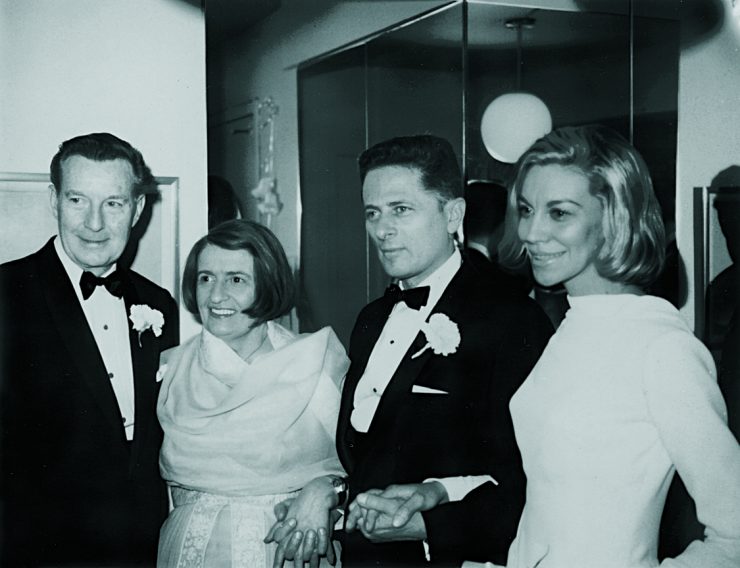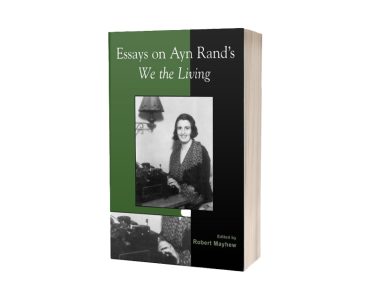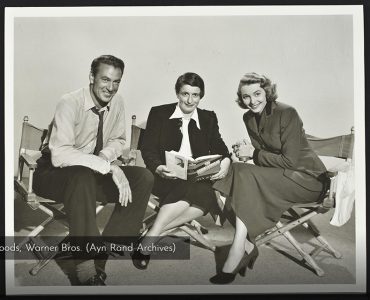In 2001, the Ayn Rand Institute Press published Facets of Ayn Rand: Memoirs by Mary Ann Sures and Charles Sures, based on forty-eight hours of interviews conducted by oral historian Scott McConnell from September 1998 to January 1999. Twenty years later, these entertaining and informative personal reminiscences still merit careful study and reflection. New Ideal is proud to present the entire book online in eight installments.
Start with Part 1 here
CHAPTER EIGHT
GIFTS AND MEMENTOS
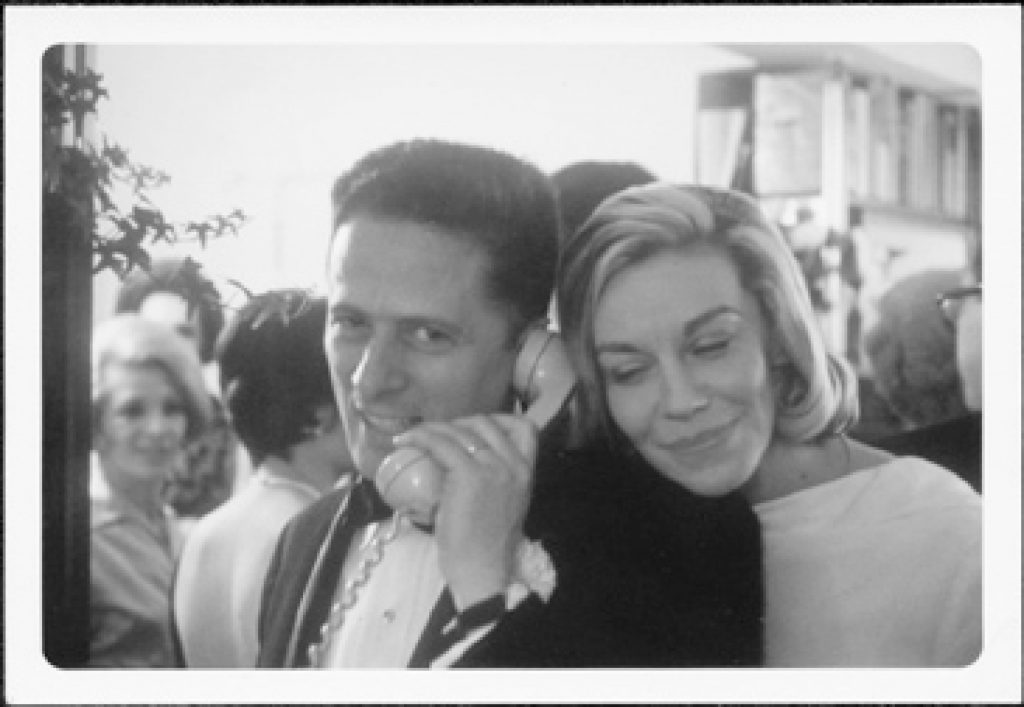
Charles and Mary Ann Sures at Their Wedding 1965
MARY ANN
ARI: Mary Ann, we know from her hand‐edited, practice inscriptions in the Ayn Rand Archives, that Miss Rand gave a great deal of thought to the inscriptions she wrote in books she gave to people. Can you tell us about the inscriptions in the books you received from her?
MARY ANN: I’ll do them in the order she gave them to me. The first one is The Fountainhead: “To Mary Ann Rukavina — Thank you for a magnificent performance and for the inspiring way you made use of the philosophy of this book — Ayn Rand, May 24, 1955.”
ARI: What was the performance?
MARY ANN: A lecture I gave to my medieval art class. Ayn attended. The lecture compared a modern suspension bridge to a nonobjective painting. I asked what made each possible, and then answered the question by explaining the underlying philosophy of each. To connect it to the course, I quoted from Roger Bacon, specifically his predictions about technology in a future civilization. To introduce philosophy, I quoted from Roark’s speech1 — the paragraph that begins “Man cannot survive except through his mind.” And brought in concepts of identity and causality.
Ayn loved the lecture. She said it was the first time, to her knowledge, that The Fountainhead had been used in a college class. The next time I saw her, she gave me the inscribed copy of The Fountainhead. And a small gold pin in the shape of the dollar sign, inscribed “A is A.”
ARI: Let’s go to the next autograph.
MARY ANN: That was Atlas Shrugged: “To Mary Ann — expecting you to fight for Richard Halley as I fought for Hank Rearden.2 Ayn, August 15, 1957.”
ARI: Any memories connected with that inscription?
MARY ANN: Yes, two. One is the night we were given Atlas. She handed the books out, one by one. And of course everyone read his inscription immediately and thanked her. Everyone felt the same thing: what a pleasure to see Atlas as a real book! To hold it as a physical object! Then, we all sat down and started to read, ignoring her completely. This went on for a few minutes, and then Nathan started to laugh and called it to our attention.
ARI: Was she at all offended?
MARY ANN: Just the opposite. She said it was a great compliment to an author, especially since we had all read Atlas in manuscript. She was very pleased, and amused.
ARI: What is the other memory?
MARY ANN: A conversation Ayn and I had a few weeks later, about my inscription. I raised the subject of how one fights for Richard Halley. And we discussed the forms the battle would take — such as teaching and writing. She added that it also included every conversation I might have in which I explained the purpose and meaning of art. And then she said something that was then and has always been very important to me.
ARI: What was that?
MARY ANN: She reminded me that her goal was to write fiction, to create the kind of characters she admired and wanted to see in real life, and that all her work as a philosopher was for that purpose. She stressed the importance of pursuing values in the way one finds most interesting and gives one the most pleasure — as she had done. She said that over the years she had been criticized for not writing her ideas in nonfiction form; some people said it was her duty to do so. She said she would never have given up fiction to write philosophical treatises, that doing so would have been self‐sacrificial. In that conversation she stressed the importance of pursuing personal values, and not undertaking any battle as a duty.
ARI: And the next inscription?
MARY ANN: We the Living: “To Mary Ann — with my thanks for being a ‘morale‐building’ ‘assistant — Ayn, December 24, 1958.” She gave all of us copies on Christmas Eve, which was close to the official publication date in 1959.
ARI: She was referring to your assistance on Atlas Shrugged?
MARY ANN: Yes, but also to other work I had done. After the publication of Atlas, I continued to do small typing jobs for her, from time to time. One of them was typing the Foreword to We the Living, and there’s an amusing story connected with that. But first, if you look at the inscription, you see that she enclosed “morale‐building” with quotation marks, and started to put quotation marks around “assistant.” She apologized for the mistake, and I assured her that it was all right, that as her assistant I would correct it. Of course, I never did. It’s one of my favorite inscriptions.
ARI: What were you doing to boost her morale?
MARY ANN: She knew she could count on me to come on time, get right to work, finish assignments, and so forth, in a professional manner. And I loved working for her; I always went in a buoyant mood. She said that lifted her spirits.
ARI: Tell me about the Foreword incident.
MARY ANN: I typed it from the handwritten manuscript, and then I proofread it before giving it to her. She noticed immediately a mistake I had made: I didn’t type “foreword,” I typed “forward.” She was amused by the mistake, and said it was a good Freudian slip, that it meant I was thinking ahead, looking to the future.
ARI: Any other memories of that evening?
MARY ANN: Yes, one lovely one. And that was the Christmas tree Frank put up for Leonard. Leonard loved everything about the Christmas season, and asked for a tree. So, that year, Frank bought a small, perfectly shaped pine, some ornaments, tinsel, lights — the works. And he made a splendid tree. He placed it on a table in a dimly lit corner of the living room, and the tree twinkled and glistened in the semi‐darkness. It was a cheerful sight. That, incidentally, was vintage Frank O’Connor — to create something beautiful for a friend he loved.
ARI: Are there other inscriptions?
MARY ANN: There are two more, both related to my marriage to Charles. Ayn’s engagement gift to me was a cookbook: Rombauer and Becker, Joy of Cooking. The inscription reads, “To Mary Ann — to make it a joy, think of a certain scene in Chapter II, Part III of ‘Atlas Shrugged’ — with all my best wishes and love, Ayn 10/10/64.”
ARI: And what is that scene?
MARY ANN: Dagny cooking breakfast for Galt in the valley. Ayn asked me to promise her that I would use it, even though she autographed it. I did use it, but first I put Saran Wrap over the autographed page to protect it. Soon, the book began to look like a cookbook in use, pages all splattered with food. It must be the only cookbook autographed by Ayn Rand! I love the inscription. It says so much about her.
ARI: What is that?
MARY ANN: Her focus on values, on making something that could be boring, like cooking, into a romantic episode. It was Ayn’s reminder that a wife can find enjoyment in cooking, if it’s for someone she loves. And Ayn’s sense of drama, too — the philosopher giving something simple, like a cookbook, but with an inscription referring to a scene in her grand opus. It also reflects her tiddlywink, cheerful aspect.
So does the next inscription, five years later, in the copy she gave me of Night of January 16th: “To Mary Ann — Happy Wedding Anniversary! — Affectionately, Ayn, 1969 (‘The exact date is on the book jacket.’).”
ARI: You were married on January 16?
MARY ANN: Yes. Actually, it was Ayn’s idea. Charles and I were thinking of getting married early in January, and sailing on a honeymoon cruise on January 17. When Ayn learned this, she suggested we get married the night before, on January 16. “It’s good writing,” she said.
ARI: Were you married in New York?
MARY ANN: Yes. We had a lovely wedding given by Joan and Allan Blumenthal in their apartment. Incidentally, Frank gave me away and made my bouquet — a stunning arrangement of white calla lilies. So, four years later, to celebrate our anniversary we decided to give each other copies of Night of January 16th, and I asked Ayn’s secretary to get copies for us and deliver them to Ayn for autographs. She liked the idea and insisted on giving them to us as her gifts.
ARI: Do you have any other mementos of your friendship?
MARY ANN: I have a few. One is a note she wrote to me. We had planned to meet at her apartment and go to the Roosevelt Hotel for dinner and a lecture. When I arrived at the apartment building, the doorman handed me this note from Ayn:
“Dear Mary Ann: Please excuse me, but I had to go out and could not reach you (phoned several times, but you weren’t home). I will not have time to come back home, so I’ll go straight to the Roosevelt Coffee Shop. See you there — and will explain. Love, A.” It’s dated February 1, 1960.

When we did meet, she explained that she had been called to an unexpected business meeting with her agent. This note is an example of how scrupulous she was in her dealings with people.
ARI: In what way?
MARY ANN: Her doorman knew me, and she could easily have asked him to tell me she had to leave and would meet me in the coffee shop. In a real emergency, she would have. But, by writing the note, she let me know that it wasn’t an emergency. She took the time to call me more than once and to write a note confirming our arrangements, saying she would explain. She didn’t leave me to worry and wonder.
The other souvenirs are some notes and costume jewelry. There is a darling note from 1962, after I had stayed with Frisco while they were away. “With love and thanks — from Frisco” followed by Ayn’s drawing of a paw print.
ARI: What was the occasion for the gift of jewelry?
MARY ANN: Her expression of thanks for the times I had come to stay with Frank while she was hospitalized. There are three pieces, two that she knew I especially liked. One is a necklace in the shape of a snake, made of silver, and green‐blue glass and enamel. It always made me think of Cleopatra’s asp. Another is a six‐pointed star‐shaped brooch, made of pieces of mother‐of‐pearl, with diamond chips at the star’s points. Something to be worn, she said, by an elegant and feminine sheriff. And the last is a necklace I had never seen her wear, but which she thought I would like. It’s a series of moonstones suspended from a delicate silver chain. She advised me to wear it against a bare neck, not on clothing, for the best effect.
When she gave them to me, she told me not to put them away as souvenirs, but to wear and enjoy them.
CHARLES
ARI: Charles, what books did Miss Rand inscribe for you?
CHARLES: I have two inscribed books. My copy of Night of January 16th reads, “To Charles — Happy Fourth Anniversary! — Affectionately, Ayn, 1969.”
The other one is Atlas Shrugged. “To Charles — with my congratulations on the happiness you have achieved, and my best wishes for a future of ever‐growing achievement — Affectionately, Ayn, 11/15/65.”
ARI: Does the date commemorate any event?
CHARLES: The event was a conversation I had with Ayn about how Objectivism had affected my life.
ARI: And how had it?
CHARLES: In essence, it taught me that seeking happiness was morally right and the purpose of living. My reason for having the conversation was to thank her for Objectivism and tell her how it had enriched my life. And, most important, Objectivism brought Mary Ann and me together, and that is and always will be the source of the greatest happiness for both of us. Not long after the conversation, Ayn gave me the inscribed copy of Atlas.
ARI: Did she explain the reason for the inscription?
CHARLES: She didn’t have to. One of the points she stressed in that conversation was that happiness can be achieved. It was up to each of us to decide what we wanted of life, to think about what values to pursue and what goals to reach — in effect, to think about what would make us happy. There are causes for the state of happiness which we can enact. And to reach that state is an achievement. That’s the focus of the inscription, and that’s why I treasure it.
ARI: Do you have other souvenirs?
CHARLES: I have a great many from the stamp collecting days with Ayn. I should say stamp collecting years — we started in 1971 and continued until her death in 1982. Sharing this hobby was one of the most enjoyable aspects of our friendship. Earlier, I spoke about collecting her favorite stamps that were illustrated in her article “Why I Like Stamp Collecting.” I mounted the actual stamps over the illustrations and showed her the results of my work. And, of course, I thanked her for inspiring me to revive my interest in stamps. She inscribed that copy of the article, “To Charles and Mary Ann — Thank you! Ayn Rand, 5/10/71.”
ARI: What are the other stamp souvenirs?
CHARLES: Correspondence about stamps, including a number of thank‐you notes from Ayn for stamps I had sent to her. I have lists of stamps she needed for her collection. And many glassine envelopes she labeled which contained stamps she sent to me — stamps she couldn’t use for one reason or another. And accountings. One of my favorites is a scrap of paper with a brief, handwritten accounting she sent regarding some stamps she took from an album in that worldwide collection I talked about. It reads, “Total: I have taken 39 stamps — at 2¢ per stamp = 78¢ AR.”
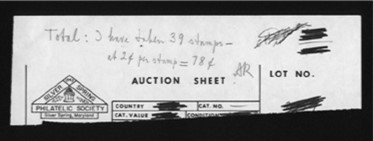
ARI: Do you have any souvenirs relating to Frank O’Connor?
CHARLES: Yes, indeed. We have four of his paintings, all still lifes. One of them is the very first still life he did in oil. It shows a crystal decanter with green liqueur, and a silver candelabrum, and a copper tray, some fruit — all lit by sunlight. Frank never gave it a title, but Ayn always called it “Benevolent Universe.” We also have the candelabrum, which was one of a pair; we have both.
Another painting is the Still Life with Apples, a simple composition with three red apples and a small, blue ceramic vase. We have that vase, also. Mary Ann often fills it with perky daisies.
The other still lifes are studies in light and texture. One, which is unfinished, includes some artist’s materials — a tube of paint, a bottle of oil, a package of cigarettes. The other still life includes a brick‐colored container full of art brushes casting prominent and sharp shadows on an adjacent wall, some books (one of which is blue‐green and looks like it could be Atlas Shrugged), a newspaper — all sitting on a lustrous surface. Both paintings have sections of drapes in the background, done in Frank’s unique style of rendering cloth.
ARI: He didn’t give titles to these paintings?
CHARLES: No. They weren’t fully finished, and he never titled a painting until it was finished to his satisfaction.
We also have the toy drum and the artist’s wooden anatomical model Frank used in Diminishing Returns.
ARI: How about photographs of the Sures with the O’Connors?
CHARLES: Very few of those, just the ones from our wedding album. Ayn always discouraged snapshots, so I seldom carried a camera with me on our trips to New York. But for our wedding, there were no restrictions. We didn’t have a professional photographer, but many guests there had cameras. Ayn wanted a picture of the four of us, and she and Frank posed with us for that memorable occasion. We all look so happy together. It’s the best souvenir of the wonderful friendship we had with Ayn and Frank.
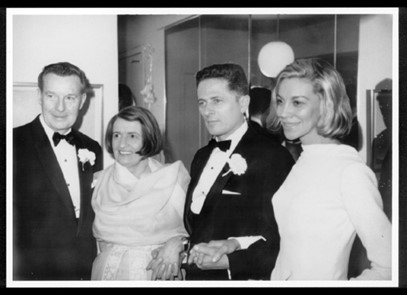
Frank O’Connor, Ayn Rand, Charles and Mary Ann Sures at the Sures’ Wedding
1965
Copyright © 2001 Mary Ann Sures; Introduction copyright © 2001 Leonard Peikoff; all rights reserved.


